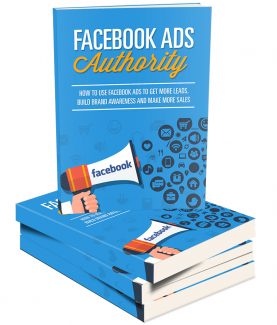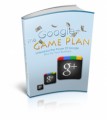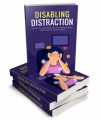 License Type: Master Resell Rights
License Type: Master Resell Rights  File Type: ZIP
File Type: ZIP
 SKU: 59194
SKU: 59194  Shipping: Online Download
Shipping: Online Download
Ebook Sample Content Preview:
Custom Audiences
We mentioned at the start of this book that Facebook Ads included a lot of very smart and useful tools and features. Well, there are few better examples of this than custom audiences. Essentially, custom audiences allow you to choose even more precisely who you want to target. How can you target someone more precisely than choosing their age, location, job and hobbies?
By literally writing down a list of the people you want to market to and sending it to Facebook!
This is just one example but actually there are a number of types of ‘custom audience’. Find them below…
Customer List
This is the standard type of custom audience. All you’re doing here, is to literally give Facebook a list of contacts and then have those people be the only ones who see your ads. This is a fantastic way to turn a mailing list you may have been collecting from your website into a list you can then message from Facebook. Facebook will actually try to match phone numbers, emails or names with people in its database and that will then allow you to target them with your ads.
This is a perfect way to get even more value out of your mailing list. You know these are very warm leads, so perhaps all they need is that extra push on their Facebook page to buy your product!
Website Custom Audience
Here you place a ‘Facebook Pixel Tracking Code’ and use this for Facebook remarketing. There’s a whole chapter on this below, so let’s gloss over it for now…
App Activity Custom Audiences
This is a custom audience based on how people use your desktop or mobile app. This is similar to remarketing, except you’re doing it through an application. This is a great choice if you are using an app as part of your marketing campaign – for instance if you have created an app to let patrons order food from your venue. Look Alike Audiences
This is a particularly smart feature that Facebook offers marketers to find new potential customers. Here, once you have entered your mailing list or another custom list, you can then ask Facebook to look for more potential fans that have similar traits. For example then, if your list is filled with people of a certain age and with certain interests, Facebook will find more users that
match those demographics and then create an even bigger list for you. This is a great way to find more people just like the audience you’ve created so hard to create and it can save you a lot of time and money spent trying to perfect your targeting manually.
Setting Bids and Budgeting
Now you’ve created your ad text, your image and your targeting, you need to think about the amount you’re going to spend on it. This is another big decision that will have all the impact on just how successful your ads are.
To start with, you will want to choose the specific bids that you set on your ads by going to your Ads Manager and then looking at the table at the bottom of the page where you can see all the ads you created. Select ‘All Ad Sets’ if any are missing. Now hover your mouse over the ads you want to edit and then click ‘Edit Ad Set’. Here, you’ll have the option to change your bids and your budget to more closely fit your budget.
But how much should you be willing to pay for your ads?
Choosing the Right Budget
Your aim is to generate profit. Whatever else you do when creating your ads, it should always serve this end goal and that means you need to think carefully about how you’re going to budget. Yes, spending more on Facebook Ads will ensure that more of your ads get seen and theoretically, you can invest a lot of money into your ads in order increase the number of hits on your site and therefore the number of sales. The more you spend on ads, the more people come to your site and the more money you make…
Except in reality, it’s often more complicated than that. For starters, you will likely have a limited budget. Secondly, it will usually take a small amount of time before you eventually stumble on the best type of ad, with the best targeting and the best script. In other words, you risk wasting a lot of money by blowing your whole budget right away on an ad campaign that doesn’t work. This is why a smarter strategy is to work out how much budget you have to experiment with and then to gradually increase your spend as you become more and more confident in the strategy you’re using.
Of course you’ll need a bigger budget if you’re targeting a bigger niche too and for that reason, it can make sense to start out with a smaller niche where you can practice and then to move into bigger areas as you start to amass budget to spend and more experience on how to make the most of your adverts.
As mentioned, a good way to start setting your CPP is by looking at your CLV (customer lifetime value) and then working out how much each click is worth to you.
To work this out, first calculate how much profit you make on each sale. Once you’ve accounted for CoGS (Cost of Goods Sold – the overheads), how much of the revenue you make is actual profit? Now look at your conversion rates. When you get 10,000 clicks on your website, how many of those convert into paying customers? If it’s 1%, then that means you’re now getting 100 sales for every 10,000 clicks from your ad. If you’re selling a $30 ebook, then you’re going to be earning $3,000 dollars for those 10,000 clicks – not bad!
If you’re paying $1 per click though, then suddenly that $3,000 doesn’t look so good anymore! Now you’re paying $10,000 to earn just $3,000… you see the problem?
If you lower your bid/daily budget, then you might find that your ad doesn’t show as often and you’re unable to generate many clicks at all. Another strategy then might be to sell a more niche product, where you only have to pay 10 cents to get the same amount of visibility because you’re not bidding against other big advertisers. Now you’re paying $1,000 for $3,000 worth of sales!
Another option is to increase the value of your product. Of course this will mean you’re going to sell fewer items but somewhere you should be able to find the ideal ‘middle ground’ where you’re shifting a good amount of products with a good profit margin each.








